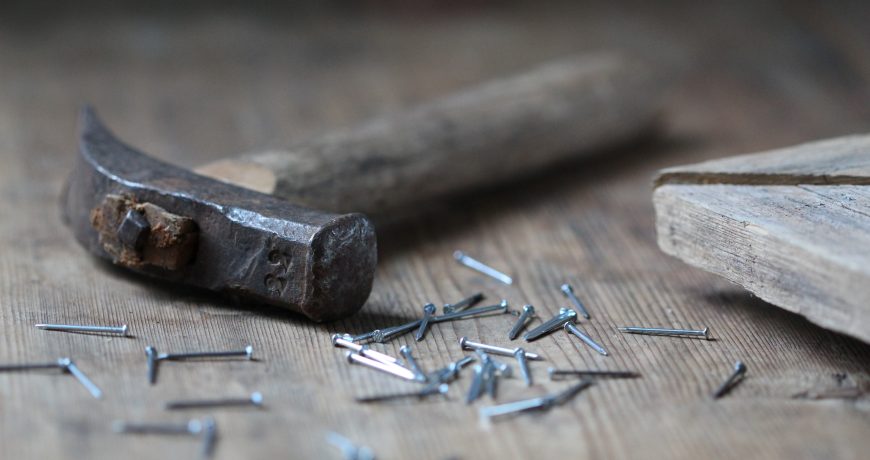What Size Nails for Cedar Fence Should You Use? All About Cedar Fence Nails
Cedar fences are among the best long-term investments to add to your property. You must protect your investment throughout a 40+ year cedar fence lifespan by ensuring every detail is in order, right down to the nails.
Whether installing a new set of pickets or performing yearly cedar fence restoration on your existing setup, you must understand what size nails for cedar fences are ideal. Red cedar fences are softer than most other types, which requires specific nails and installation techniques.
With over 50 years of experience as a supplier and retailer in the wood fence industry, Big Tex is your ultimate knowledge resource for all things cedar fencing. We have compiled our knowledge on cedar fence nails to help you make the right choices.
We’ll cover everything from what kind of nails to use on cedar fences to the best tools for installing and replacing cedar fence nails, so let’s get right into it!
The Importance of Choosing the Right Cedar Fence Nails
Before exploring the best nails for cedar fences, we must discuss why this decision is more crucial than you think.
Figuring out what kind of nails to use on cedar fences is critical to preserving the structure of your fence and maximizing its lifespan. For example, cedar is significantly lighter when comparing cedar vs pine fences. This has many benefits, including cheaper costs, easier installation, and better resistance against high winds or snowfall.
However, the one drawback of cedar fences being lightweight is that they are more prone to nails pulling out of the boards over time if not appropriately fastened. Thankfully, you can avoid this drawback entirely by choosing proper cedar fence nails for the job.
So, What are the Best Nails for Cedar Fence?
We already have a clue as to what makes an ideal set of cedar fence nails, as we need a durable nail that can coexist with the fence’s 40+ year lifespan and resist any unwanted pull-outs.
That small list of criteria is a good starting point, but we’ll need to explore this topic further to pinpoint the best nails for cedar fences. Let’s look at sizing, the type of nails, and how sealants and coating can affect the fastening process.
What Size Nails for Cedar Fence? An Overview of Nail Lenth and Gauge
The optimal size of nails for your cedar fence boards will vary based on the density of your pickets. Most red cedar boards are from ½” to ¾” in thickness.
Nail sizes are denoted in a few different formats, the two most common being the “penny system” and standard inches. For our purposes in finding the best nails for cedar fences, we want to aim for three sizes of nails: 6d, 8d, and 10d.
- 6d nails: 6d or 6-penny nails are around 1.5 inches long and work best with ½ inch boards.
- 8d nails: 8d of 8-penny nails range from 1.5 to 2 inches long and are an ideal middle ground for boards between ½ and ¾ inches in thickness.
- 10d nails: While rare, some cedar boards can be thicker than ¾ inches. 10d nails are 2.5 to 3 inches long and suitable for dense pickets.
Avoid nails larger than 10d unless expressly advised by a trusted retailer since nails that are too big are more prone to pulling and warping.
What Kind of Nails to Use on Cedar Fence: Ring Shank vs Flat vs Checkerhead vs Round
The type of nails you choose matters as much as the size. There are a few different options available, but only one clear winner.
Flat Head Nails:
- Offer a low-profile look with a flat, smooth shank and head
- Provide less resistance to pull-outs due to lack of threads/ridges
- Will loosen over time due to seasonal temperature changes
Checkerhead Nails:
- Checkerheads contain a raised diamond or square pattern head for added grip.
- Offer more holding power than flat head nails.
- This design will cause more splitting in soft red cedar due to the structure of the nail head
Round Head Nails
- Designed with a smooth, rounded head
- Lacks threaded shanks, reducing pull-out resistance
Ring Shank Nails:
- Consist of raised, helical threads or ridges along the shank
- Unlike other nails with raised heads that concentrate force, ring shank nails distribute pressure evenly along the shank when driven in. This lessens the chance of cedar wood splitting.
- By resisting pull-outs so well, ring shank nails allow the fence to maintain its integrity and structural strength for 15-20+ years of weather exposure.
All things considered, choosing ring shank nails is your best bet to preserve the lifespan of your cedar fencing.
Coating Options for Additional Protection
Once you’ve acquired a set of ring shank nails that are correctly sized for the thickness of your boards, there are a few more ways to ensure a securely fastened fit for your fence nails.
Correctly using a cedar fence sealer that complements your choice of nails can help resist any warping, cracking, or pulling out, keeping your nails securely fastened.
You can opt for either water-based or oil-based sealants for your fence. Water-based generally allows more of the wood’s natural texture and grain to show through and is often slightly more eco-friendly.
Conversely, oil-based sealants usually provide extra protection against rotting since they can penetrate the wood more effectively. Regardless of your choice, routinely applying your sealant will help extend your fence’s lifespan and keep your nails from pulling out prematurely.
Specific Brands We Recommend
Not all ring shank nails are made equal. We specifically recommend a few brands, thanks to their reputation for quality and robust designs.
- DeWalt: One of the strongest reputable names on the market, with a history of consistent sizes and sturdy stainless steel.
- Paslode: Paslode nails feature a unique spiral design and a zinc coating to protect your nails from the elements
- Bostitch: Affordable nails that are hot-dipped and galvanized, fighting off rust even in cold climates
- Metabo: Metabo’s innovative designs have a consistent quality and are an excellent choice for 8d or 10d ring shank nails.
Once you have your nails of choice, it’s time to add them to your fence!
Tips on Hammering in Your Cedar Fence Nails for a Sturdy, Long-Lasting Fence
Installing or replacing nails into your cedar fence can go a long way towards extending your fence’s lifespan. You’ll want to consider these tips to ensure a safe and proper installation.
Ensuring Safety While Working
Working with nails comes with a few safety precautions to consider. Gather your safety equipment, such as safety goggles, hearing protection for pneumatic tools, and thick gloves and boots.
You’ll also want to properly clean your cedar fence and clear the area of any potential hazards.
Technique for Nail Placement and Depth
Once you have a safe, hazard-free work area, we must discuss the proper installation techniques.
Begin by measuring and marking each board before installing to ensure proper spacing. Nail placement should be about 1″ up from the bottom edge and 1″ in from each side. This reinforces boards against warping forces.
From there, you can pre-drill pilot holes slightly smaller than the nail diameter to reduce the risk of splitting. After setting this up, you will drive your nails in at a slight angle, around 10 to 15 degrees, rather than straight on, to ensure a firm grip.
We also recommend using two nails per rail to add an extra layer of protection. Be sure to check each nail and level accordingly before fully setting them on the boards.
Tools for the Job: Manual vs Pneumatic
Last but certainly not least, the type of tool you use can significantly impact how your nails can set into the wood. Manual claw hammers will work with many types of nails but can be fatiguing.
Conversely, pneumatic nailers offer increased speed and extend the time you can work on a fence before tiring out. However, pneumatic nailers have extra safety precautions and can be a costly investment if you don’t already own the tool.
Overall, either type of tool can work for most fences, but be sure to verify that you are buying the correct nails for your preferred installation method.
Don’t Forget the Role of Quality Cedar Fence Pickets!
Choosing the correct nails for your cedar fence is only part of the challenge to ensuring your fence lasts the entirety of its lifespan. You must also ensure you buy quality cedar boards from a trusted retailer!
Thankfully, you are already in the right place. Big Tex is the #1 trusted name for western red cedar fence pickets in Austin, San Antonio, Dallas, and throughout Texas. We’ve been in the industry for over five decades, with centuries of combined experience on our staff in harvesting, selling, and installing western red cedar.
Fencing is never a one-size-fits-all solution. Whether you are looking for the best fence for security or want to maximize the aesthetic value of your property, we’ve got your back. Our designers and installers will work one-on-one with you to create a customized solution for your property.
And if you don’t know where to begin, we also have the best customer support team in the business. You can contact us by phone or at one of our Texas stores in Austin, Dallas, or Houston to receive personalized guidance on fence designs or the correct nails for your current setup.
You can also check out our fence idea gallery to get inspired by some of the fantastic designs we’ve helped homeowners achieve over the years.
Wrapping Up Our Guide to the Best Nails for Cedar Fence
Choosing the proper nails for your cedar fence is critical in helping you extend your fence’s lifespan. The best nails for a cedar fence are ring shank nails properly sized from 6d to 10d since they have the most resistance against pullouts, warps, and rotting when properly installed.
If you enjoyed our discussion about cedar fence nails, check out our blog! Our latest work includes how to paint cedar fences, when to stain new cedar fences, chain link fences vs wood, and wrought iron vs aluminum fences.
Otherwise, if you are looking for cedar fence pickets in San Antonio, Austin, or across Texas, Big Tex has you covered. You can reach out to us by phone at 1-(800)-252-8117 or stop by our Austin, Dallas, or Houston locations to begin making a long-term investment into your property’s safety, aesthetic appeal, and value.

